7 Fascinating Football Advertising Facts To Kick Off The New Season
After what has seemed like the longest summer in history, the Premier League is back! That’s right, the world’s most famous football league returns this Friday – and we could not be more excited.
So to celebrate in true Unruly style, we thought we would kick off (see what we did there?) the season with some interesting stats around football advertising, all from Unruly’s database.
There have been some truly great football ads over the years, and with the World Cup in Russia just around the corner, what better way to whet the appetites ahead of the biggest show on Earth than some good old-fashioned football facts?
P.s. It’s never too late to score, so why not let Unruly optimise your distribution game?
1. Men under 25 are most likely to feel nostalgic while watching footy ads
Nostalgia is a key component of football. Football fans are obsessed with looking back at previous matches or their favourite players. So it’s no surprise that football ads are more likely to inspire strong feelings of nostalgia than the average ad, particularly among men.
However, what is really surprising is the group most likely to feel nostalgic while watching football ads: men aged between 18-24. Now, as someone who has been forced to sit and listen to older generations talk about the good old days on more than one occasion, it’s quite surprising to see that men under the age of 25 are the ones most likely to feel the pang of nostalgia.
But they really do. Quite a lot more. In fact, men aged 18-24 are three times more likely to feel nostalgic watching football ads than watching any other type of ad. They are also 50% more likely to feel nostalgic than men over the age of 24 and three times more likely than men aged 55 and over.
They were also the group most likely to feel intensely happy while watching football ads – on average 160% more than men 55 and over, who were the group least likely to be happy while watching the commercials.
2. Football ads are twice as likely to make you laugh
Making people laugh can be very tough – just ask any stand-up comedian. It’s something advertisers know all too well. Despite being one of the most overused emotional triggers, very few ads manage to hit our funny bones. But it seems like football advertisers have found the secret sauce.
According to data collected using Unruly EQ, football ads are twice as likely to make us laugh than the average ad. That’s true for both men and women – despite soccer ads in general eliciting weaker emotional responses among women (more of that later).
Well, they do say football is a funny old game.
3. Football – it’s emotional
No one can doubt that football is an emotional game. But it seems that raw emotion can be just as intense when watching football ads.
Now, we have already spoken about how successful they are at making people laugh out loud. But when you compare the emotions people feel while watching the average ad compared to football commercials you’ll see the range of emotions they inspire.
Take a look at the chart below (source: Unruly Pulse) and you’ll see what we mean.
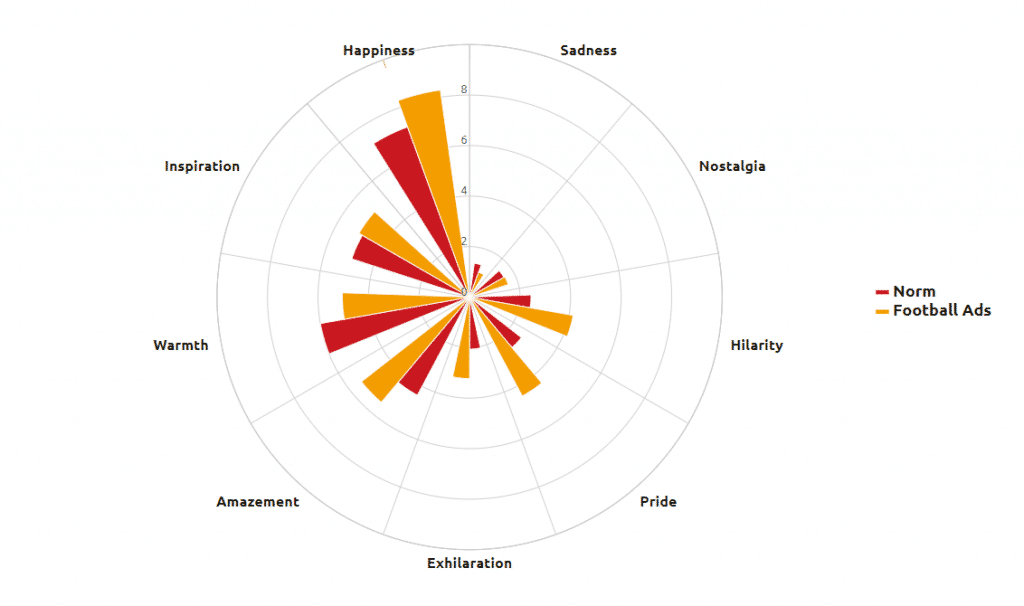
As you can see, all but just two emotions were above the norm, with football ads 33% more likely to make people feel intensely proud and 50% more likely to make viewers feel intensely exhilarated.
They are also 25% more likely to make people feel amazed, 14% more likely to make people happy, and slightly more likely to make people feel inspired, sad or nostalgic. The only emotions that are less likely to be triggered by football ads are warmth (20%) and sadness (5%).
4. Particularly among men
OK, so no surprise which of the two sexes is more likely to have an intense emotional reaction to football advertising – men.
But what’s interesting is just how much more emotional men get while watching football commercials. As you can see from the chart below, football ads are twice as likely to make men feel intensely exhilarated when compared with the average ad, 67% more like to make them feel intensely proud (133% for 18-24-year-olds), 50% more likely to leave them feel amazed and 29% more likely to make them feel intensely happy.
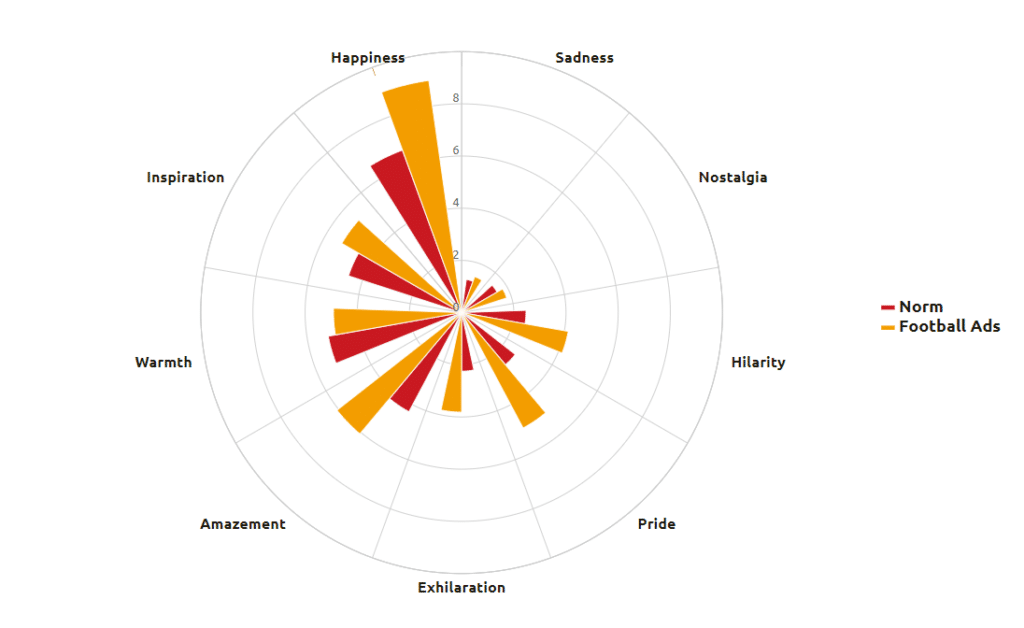
They are also slightly more likely to make men feel sad, nostalgic and inspired. In fact, every single emotion apart from one (warmth) was higher.
When you compare this to women, however, it’s a very different story.
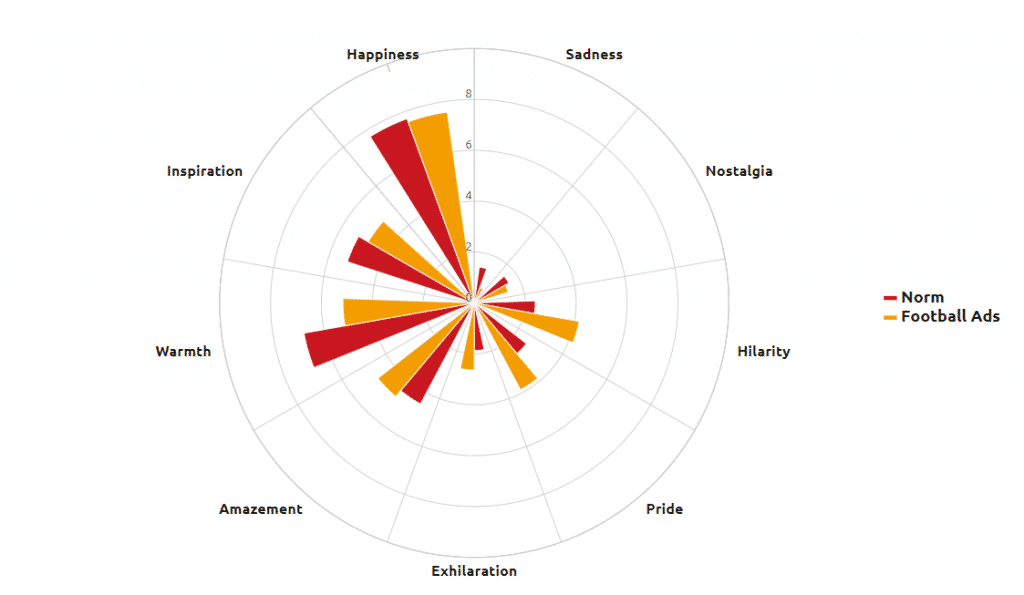
The only emotions that women were more likely to feel while watching a football ad are hilarity, pride, exhilaration and amazement. Otherwise, they are 5% less likely to be happy, 50% less likely to feel sad, 40% less likely to feel strong feelings of warmth and 15% less likely to feel inspired.
With women’s football on the rise, are football ad creators missing a trick?
5. The most popular football ad of all time does not come from Nike or adidas
You would think that the most popular football ad of all time would come from one of the two sports giants – Nike or adidas. But, surprisingly, it actually comes from a yoghurt brand.
That’s right. The ad which has attracted the most engagement online is Activia’s “La La La”. Run in collaboration with the World Food Programme and starring Colombian pop star Shakira, the ad has attracted just over 6.2 million shares since it was launched ahead of the 2014 World Cup, putting it way ahead of another 2014 World Cup campaign, Nike’s “The Last Game“, in second place. Nike’s 2010 campaign “Write The Future” was third with 2.28 million shares.
6. I’m loving It – McDonald’s World Cup 2014 ad generated the strongest emotional reaction
Recognise this ad from the 2014 World Cup?
https://www.youtube.com/watch?v=Smh0QXSmF-A
It’s from McDonald’s, and while it may not have generated the same press attention or online engagement as Activia’s record-breaking trackvert with Shakira or Nike’s epic cartoon, “The Last Game”, it was the ad which had the most emotional impact. For those who saw it, of course.
That’s right, if you take a look at the intensity of the emotions each ad generated, no campaign was more powerful than McDonald’s “Gol”. If you look at the chart below you’ll see what we mean.
Viewers were 250% more likely to laugh out loud, 233% more likely to feel amazed, 71% more likely to feel intense happiness, 17% more likely to feel intense warmth, and 5% more likely to feel intense exhilaration than they would watching the average ad.
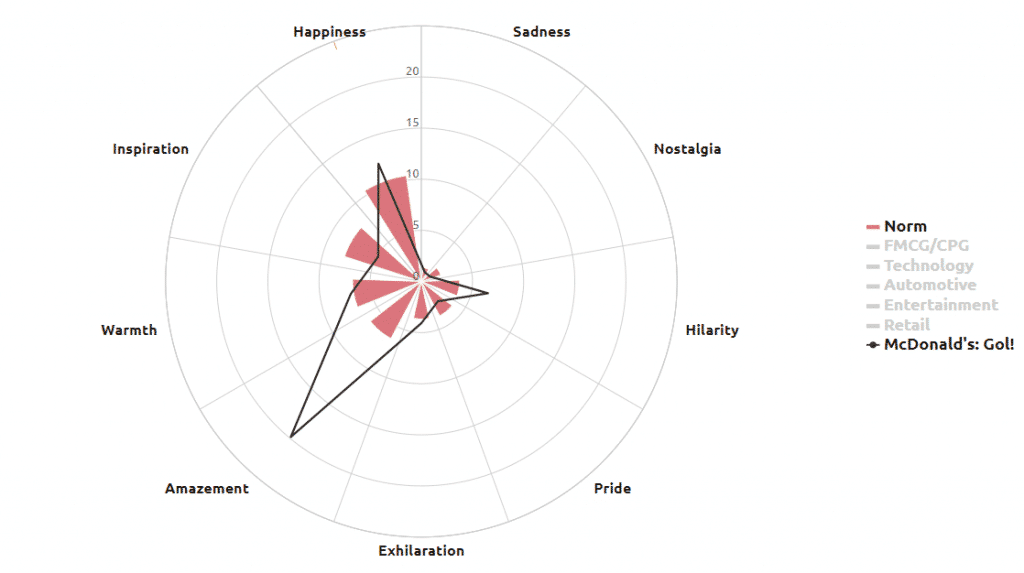
Such emotional punch meant purchase intent was 10% higher than the norm. The only problem with the ad is that a lot of people didn’t realise it was an ad for McDonald’s. Brand recall was only 62%, lower than the average of 75% and a lot lower than some of the World Cup 2014 ads.
On the flip side, Activia’s “La La La” may be the most shared ad of all time, but 13% of viewers admitted they had a worse opinion of the brand after watching the ad. A quarter of consumers (24%) said they felt better about the brand, while the vast majority (63%) said the ad had no effect on their opinion of the brand. Meanwhile, almost a quarter of viewers also felt confused by the video. This is possibly due to the fact they were not sure if it was a music video, a charity video or an ad for yoghurt.
7. Nike The Switch fails to deliver business impact
By far the most talked about ad from Euro 2016 was Nike’s epic campaign “The Switch”, starring Cristiano Ronaldo in a kind of Freaky Friday-style caper.
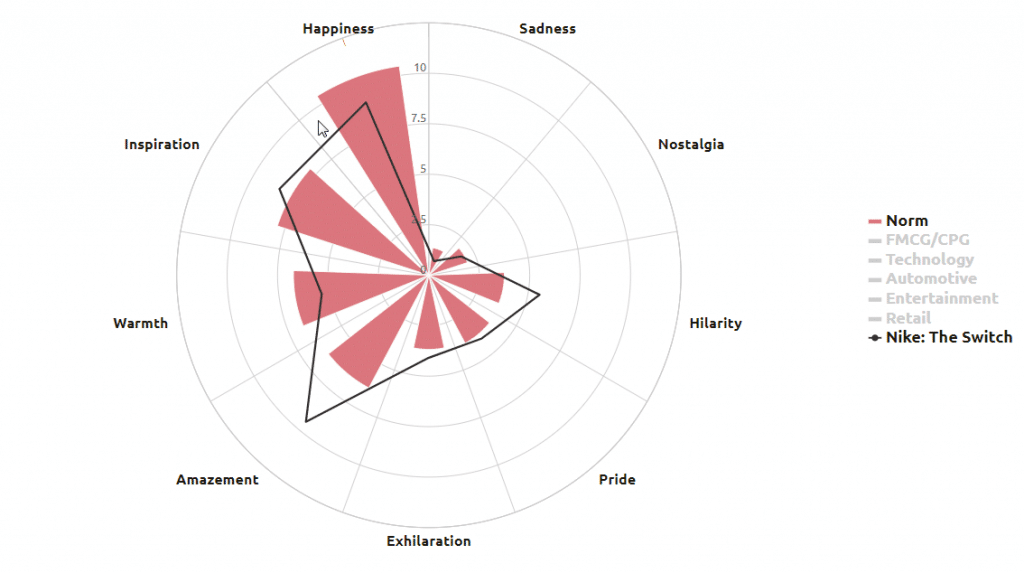
The ad certainly attracted a lot of attention, leaving viewers amazed, exhilarated, inspired and chuckling at their screens (see above). But what about its business impact? Well, when we tested the ad on UK viewers using our content testing tool Unruly EQ, we found the ad was unlikely to move the needle on Nike’s bottom line.
While viewers said they were more likely to share the ad and promote the brand to their networks of friends, purchase intent was lower than the UK norm. People were also less likely to want to find out more about the brand and less likely to be favourable to the brand than the average.
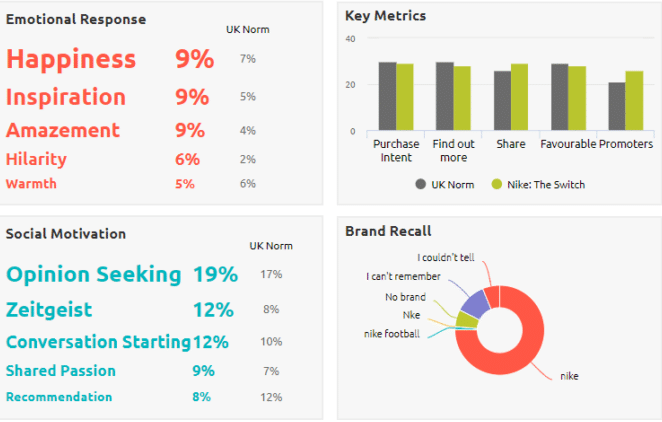
Data comes from the Football Edition of Unruly Pulse
